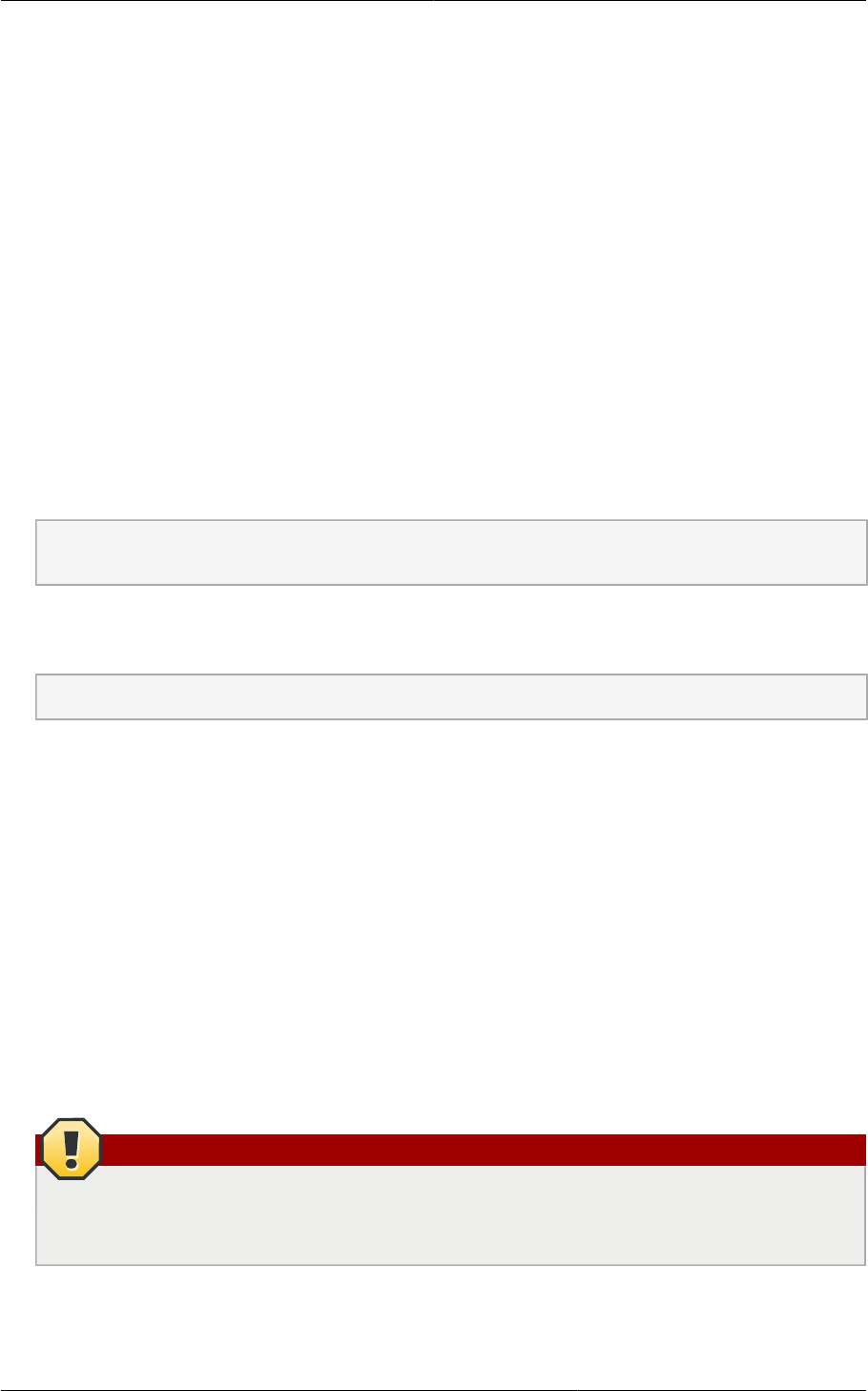
Chapter 5. Installation
52
8. Set up the database. The following command creates the cloud user on the database.
• In dbpassword, specify the password to be assigned to the cloud user. You can choose to
provide no password.
• In deploy-as, specify the username and password of the user deploying the database. In the
following command, it is assumed the root user is deploying the database and creating the
cloud user.
• (Optional) For encryption_type, use file or web to indicate the technique used to pass in the
database encryption password. Default: file. See About Password and Key Encryption.
• (Optional) For management_server_key, substitute the default key that is used to encrypt
confidential parameters in the CloudPlatform properties file. Default: password. It is highly
recommended that you replace this with a more secure value. See About Password and Key
Encryption.
• (Optional) For database_key, substitute the default key that is used to encrypt confidential
parameters in the CloudPlatform database. Default: password. It is highly recommended that
you replace this with a more secure value. See About Password and Key Encryption.
# cloudstack-setup-databases cloud:<dbpassword>@localhost --deploy-as=root:<password> -e
<encryption_type> -m <management_server_key> -k <database_key>
9. Now that the database is set up, you can finish configuring the OS for the Management Server.
This command will set up iptables, sudoers, and start the Management Server.
# cloudstack-setup-management
10. Continue to Section 5.4.7, “Prepare NFS Shares”.
5.4.4.2. Install the Database on a Separate Node
This section describes how to install MySQL on a standalone machine, separate from the
Management Server. This technique is intended for a deployment that includes several Management
Server nodes. If you have a single-node Management Server deployment, you will typically use the
same node for MySQL. See Section 5.4.4.1, “Install the Database on the Management Server Node”.
1. If you already have a version of MySQL installed, make one of the following choices, depending
on what version of MySQL it is. The most recent version tested with CloudPlatform is 5.1.58.
• If you already have installed MySQL version 5.1.58 or later, skip to step 3.
• If you have installed a version of MySQL earlier than 5.1.58, you can either skip to step 3 or
uninstall MySQL and proceed to step 2 to install a more recent version.
Warning
It is important that you choose the right database version. Never downgrade a MySQL
installation that is used with CloudPlatform.
2. Log in as root to your Database Node and run the following commands. If you are going to install a
replica database, then log in to the master.


















